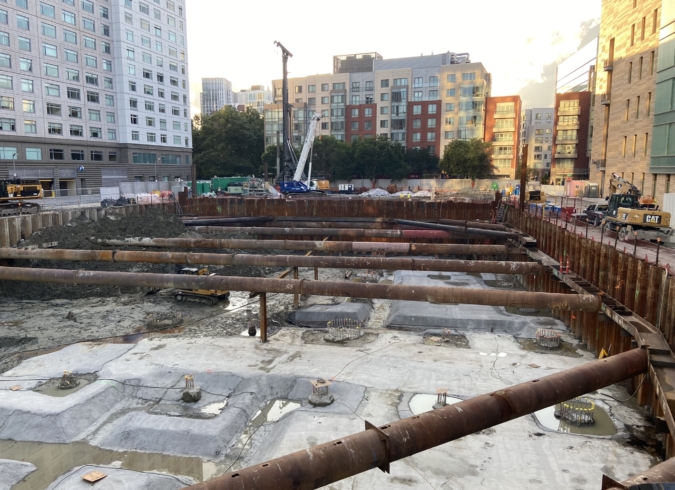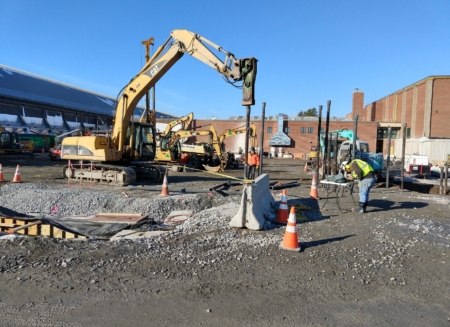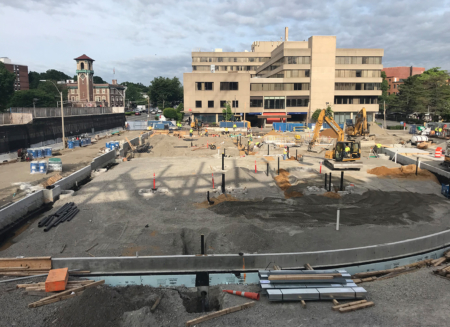The 585 Kendall project, once home to a manufactured gas plant and a gas transfer station, is undergoing a transformation into a unique hub where science meets art. This new development is being welcomed by the Cambridge community for its unique and thoughtful design elements that incorporate community cultural spaces with a first-class life science facility. Sanborn Head was retained to assist with the geotechnical and environmental components of the project, which includes construction of a sixteen-story structure with one-level of below grade space on a historically contaminated piece of property.
Key Components:
- Site Characterization
- Redevelopment
- Soil Management
- Risk Assessment
- Permitting & Compliance
- Geotechnical Engineering
The project presented both environmental and geotechnical challenges. The native soil beneath the building consists of soft clay that required the use of deep geotechnical foundations. This was further exacerbated by heavy column loads due to the unique column spacing required to construct a performing arts venue within the new building. In addition, the project is located on land that was formerly a manufactured gas plant (MGP) and a gas transfer station, resulting in contaminated and highly odorous soil that needed to be removed. Sanborn Head brought a unique and creative approach to solving these challenges to help our client and the entire project team achieve a successful outcome.
Sanborn Head provided Licensed Site Professional (LSP) services and is the Geotechnical Engineer of record for this redevelopment project. The development is complicated by the presence of soil and groundwater that has been impacted from years of prior use as a manufactured gas plant (MGP) and a gas transfer station. The project required mass excavation to a depth of about 25 feet below ground surface to allow construction of the building. The building is supported on drilled shafts ranging from 2 to 8 feet in diameter socketed into bedrock with a mat foundation. This foundation approach was selected in part due to concentrated building loads and the unique column spacing required to construct a performing arts venue. Temporary sheeting with internal bracing was used to support mass excavation for the project, along with temporary construction dewatering and treatment. Our geotechnical services included engineering evaluation, project specifications, drilled shaft design, design support, pre-construction surveys, vibration monitoring, construction monitoring, and construction administration.
Sanborn Head serves as the LSP for the project and has provided services including soil precharacterization, Release Abatement Measure (RAM) reporting, preparation of LSP Opinion letters for soil approval, real time perimeter monitoring for dust and volatile organic compounds, construction dewatering treatment, NPDES Remediation General Permit preparation, monitoring and reporting, and Activity and Use Limitation support. This project was uniquely challenged by the presence of highly odorous soil that required excavation and off-site disposal. The original approach for the project was to perform the excavation under tens to contain odors generated during excavation. Sanborn Head performed a treatability study to evaluate other odor control options, including foams, mist reagents, and activated carbon. The treatability study considered the effectiveness and recommended dosage for each product and enabled the project team to make informed decisions in real time as the project evolved. The results of the treatability study were further evaluated during a successful on-Site pilot test. As a result, a creative approach to using powdered activated carbon soil mixing to mitigate odors was adopted, allowing the team to perform the work safely without the use of tenting, which resulted in significant savings to the overall schedule and budget for the project.



